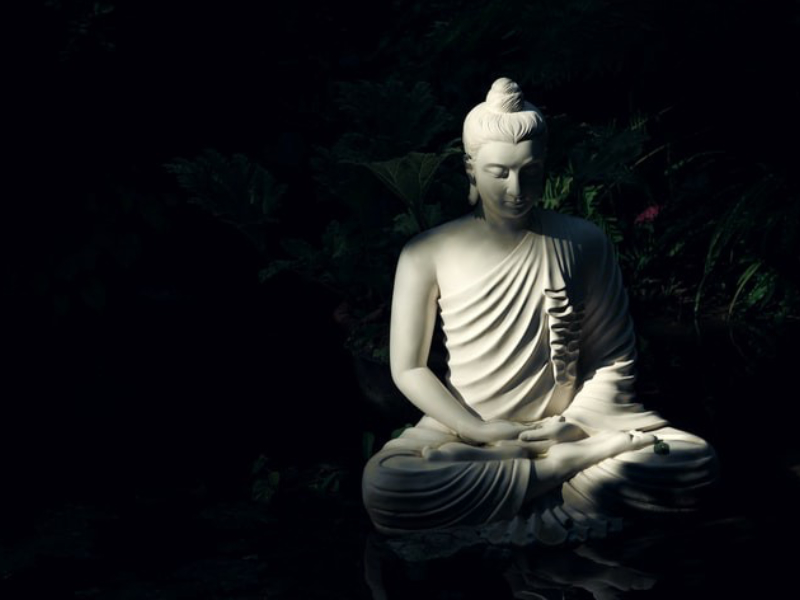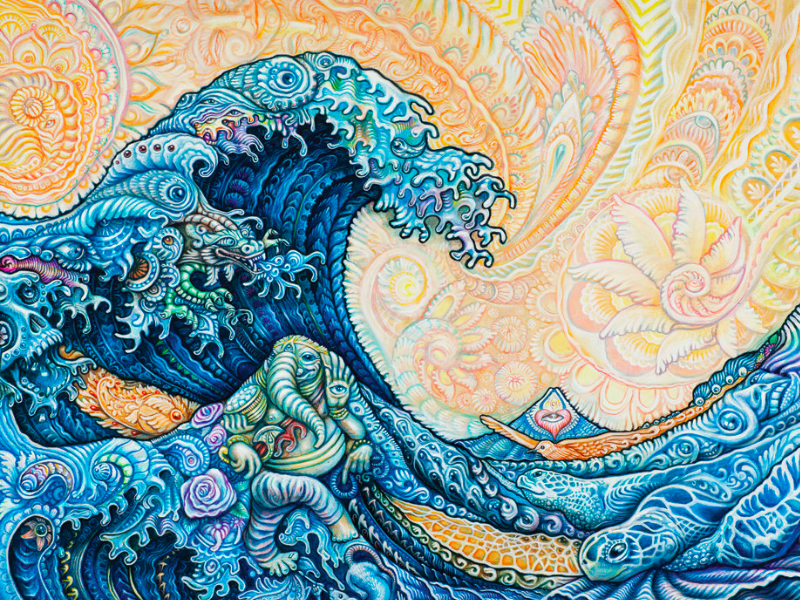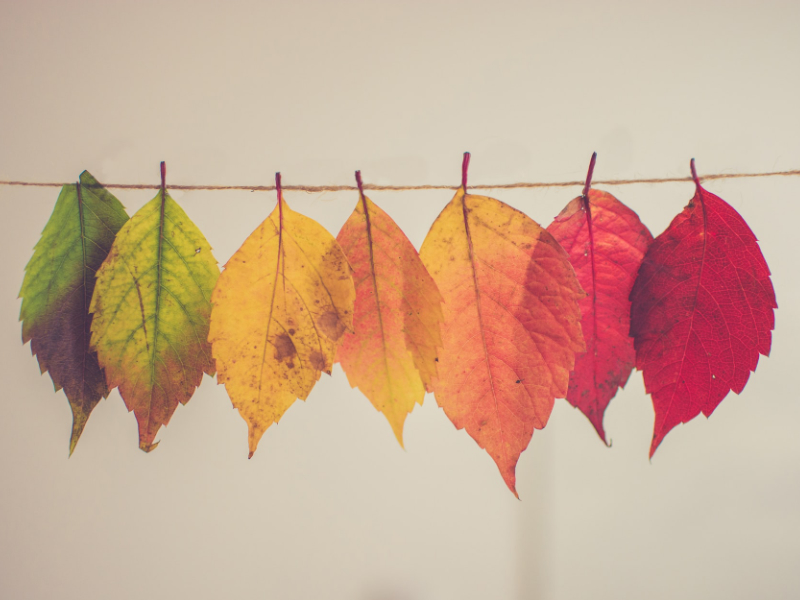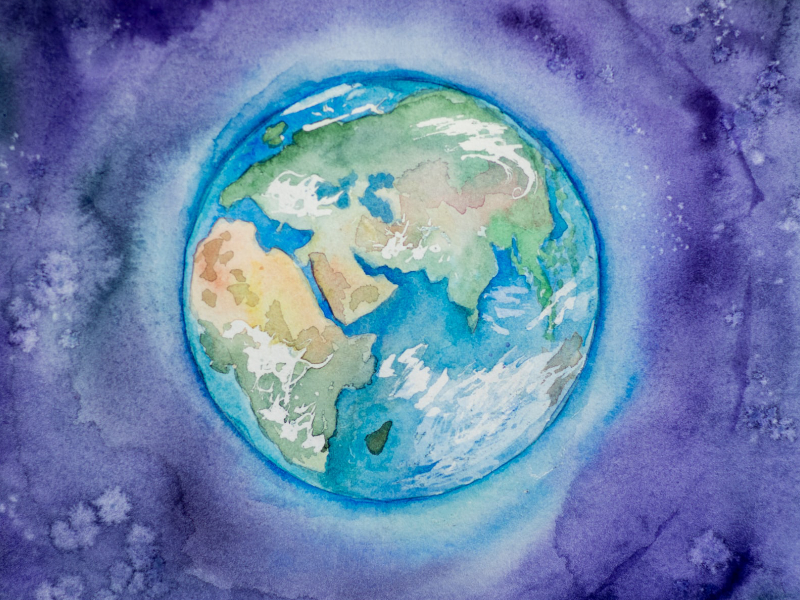The 4 Hallucinations of Perception
– Eightfold Path | Worldview & Perception –
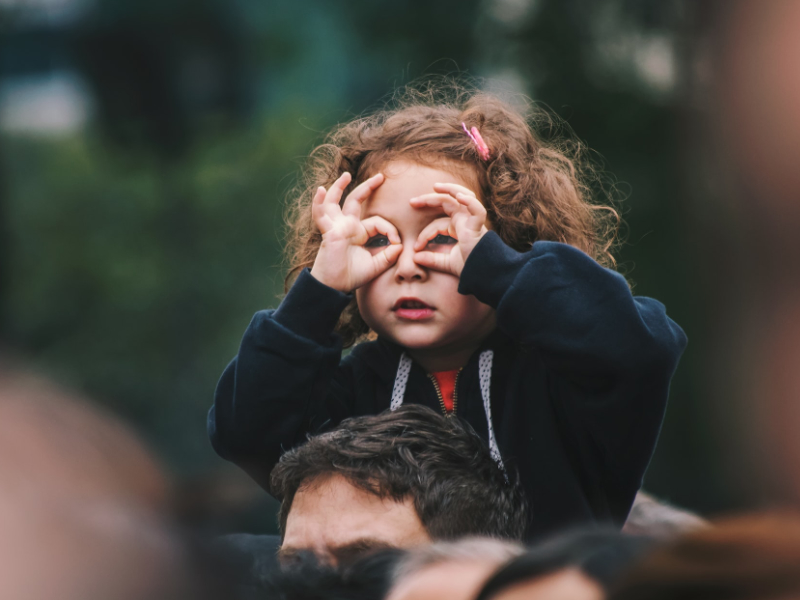
Today I want to add a bit more dimension to my article on perception, which is part of a larger series on the Buddha’s Noble Eightfold Path. To recap, the faculty of perception, remember, collects sensory data, and then constructs the data into a distinct concept, stores and organizes it into like-patterns, which creates a useful model or experience of the world we can make sense of and operate from.
In other words, perception creates our moment-to-moment world of appearances. It takes a chaotic world of ever-changing sensory data and molds it into a coherent and stable model of the world, or experience. It even molds the perception of a continuous and stable experience of ‘self’.
Now, the important question to ask for those of us practicing the Dharma is whether our perception is aligned with reality? Can we reliably say that our perception is providing us an accurate view of the world and of ourselves? Is our perception allowing us to live in peace and harmony with the way the world is?
For those of us interested in peace, happiness, and freedom, we explored the necessity of balancing mindfulness with perception. When the two are balanced, it’s as if there is a frame around the picture — the object — that allows us to see the picture more clearly, that allows us to move beyond the mere surface recognition of the object.
When we hear a dog bark, for example, we perceive the ‘dog bark’, the concept or idea, but we also see more deeply the direct quality of the experience itself— i.e., we see its ever-chaning, selfless, interconnected nature. We see, feel, and know that it is in fact no thing, a wave that is continuous with, at one with, the ocean.
When we perceive the world without mindfulness, which is the norm for most people most of the time, then we simply know and remember only the surface appearance of things. Our experience becomes more and more limited by the concepts we create. It becomes harder to stay open and fluid and free. It’s the difference between an open young child, able to learn and grow and expand, and a stubborn adult, stuck in their ways, habits, and beliefs.
* * *
Where are you stuck?
The Noble Mastery of Perception
The Buddha recognized that because our perceptions are conditioned and colored by mental habits, they can be trained, sculpted, and even set free.
How do we master our perceptions? Through mindfulness.
“The presence of mindfulness,” says venerable Analio in his book Direct Path to Realization, “directly counteracts automatic and unconscious ways of reacting that are so typical of habits. By directing mindfulness to the early stages of the perceptual process, you can train your perception and thereby reshape habitual patterns.” He then goes on to say that of central importance in this context is the receptive quality of mindfulness, which gives full attention to the cognized data. And then, of equal significance is the detached quality of mindfulness, which avoids immediate reactions.
Now, remember, this process doesn’t require thinking about things, it doesn’t require reflection. It asks us to see, to feel, to hear, to experience, objects from the perspective of awareness itself, from the unformed and open space of knowing, rather than from the self, who appears to be at the center of experience and who has judgments, biases, and reactions to the world appearances.
With our vipassana practice, by cultivating mindfulness, we can train ourselves to perceive the general characteristics of all experience — that is, we can train ourselves to perceive its impermanent, selfless, seamless, interconnected nature. We can train ourselves to experience through the lens of Love, which naturally leads to a compassionate and peaceful way of being.
* * *
What are skillful ways of perceiving that lead to happiness, that lead to the alleviation of suffering?
4 Hallucinations of Perception
To help train our perception, it may be useful to bring into awareness what Buddhists call the Four Great Hallucinations of Perception, since we likely fall into these traps at times and become agitated and dis-eased. They are:
1. The Hallucination of Permanence. How often do you take that which is impermanent to be permanent? Is your reaction to this question one of denial? Remember, knowing the truth of impermanence intellectually isn’t the same as living according to this understanding.
2. The Hallucination of Beauty. How often do you mistake beauty for lust, for wanting, for desire? Do you find yourself sexualizing bodies, placing beauty in the perception of a body, rather than in the divine nature, the divine light, that sits at the foundation of the being across from you? Don’t get me wrong, the human body is beautiful. Just don’t lose your Love glasses. (Guys, I’m mostly talking to you.)
3. The Hallucination of Happiness. Take a look at the world’s literature, look at our pop culture, at our movies and shows, at our social media networks, at our advertisements, and it’s pretty clear that most of us mistake suffering for happiness. We continually chase that which is unsatisfying in hope of finding lasting happiness, in hope of embodying lasting peace and satisfaction. We take a hit of pleasure and almost immediately find ourselves wanting again. ‘Why can’t I fill this hole?’ we ask ourselves before moving onto the next hit. Remember, wanting itself is not happiness. It is in fact what brings dis-ease and agitation.
4. The Hallucination of Self. Last but not least is the deeply conditioned perception of self — taking what is not self to be self. How often do we find ourselves identifying with our bodies, with our personalities, with our thoughts, stories, or beliefs, with our race or gender, with our feelings and emotions? Or, another common identification, even among those who may have many years of meditation under their belt, is the identification with knowing itself, with awareness itself, even though we see the changing nature of all things. Be careful of putting a wall around that which is unbounded and unformed, unborn and undying, that which is free.
I can’t emphasize enough how critical a role perception plays in the concept of self. When we forget to balance mindfulness with perception, it’s too easy to get caught in our ‘self’, to collapse into our ‘self’, to tie our ‘self’ up. Our lives then become the mere stage for acting out this fictional idea of self.
Remember, the concept of self is no more than a designation of a certain pattern of energy. It’s a certain collection of arising appearances. It’s like a the concept ‘storm’. When we look and examine closely, there is no thing called ‘storm.’ There is a collection of wind, rain, lightning, each of which is a collection of other things (the infinitely divisible relational world; the world of contrast and compare). A rainbow is another example. There is no rainbow, only a specific pattern of light, water, angles, visual organs, and consciousness). The Big Dipper is another one.
“We live in the illusion and appearnce of things (the world of perception). There is a reality. You are that reality. When we understand this, we see that we are nothing. Being nothing, we are everything. That is all.” — Kalu Rinpoche
Our perceptions do not represent Ultimate Truth. Again, they are colored and conditioned by various influences (being born a human with our sensory apparatus and genetic makeup; cultural conditioning, language, social networks; our environments, experiences, and circumstances, etc.). Practice mindfulness and learn to let go of the world of appearances. Instead embody the formless, unbounded space of existence. Embody lasting peace and freedom.
“The experience of emptiness, selflessness, freedom, is not found outside the world of ordinary appearances as many people mistakenly assume. In truth, we experience emptiness when the mind is free from grasping at appearances.” — Tibetan Master
Freedom is not a far off state. We can cut through the hallucination of perception in an instant. We need only remember to be mindful, to not grasp at or identify with what is not self, which is everything, which is whatever is arising in this moment.
Your mind is already unmoving and at peace.
John Driggs | Meditation Teacher & Founder of The Space of Possibility Podcast, Blog, & Retreat Center | Explore & Expand the Space of Possibility that You are!
More Articles
“The Art of Bare Attention”
Today we’re going to talk about the ancient Buddhist practice vipassana, or insight meditation. Now, just to be clear, this is an entirely secular practice. It doesn’t require you to adopt any dogmatic beliefs…
“The Faceless Seer”
How do you hold your love? Do you hold her from stillness, with nowhere to go, with nothing to do? How do you hold your love? Do you hold her with acceptance, with open hands and arms, with unabashed…
“Everything Changes”
It’s no secret everything changes. Your experience this morning isn’t your experience now. Yet how many of us act like we really understand this? How often do we grasp onto the illusion of things…
“The Divine Connection”
How do you hold your love? Do you hold her from stillness, with nowhere to go, with nothing to do? How do you hold your love? Do you hold her with acceptance, with open hands and arms, with unabashed…

